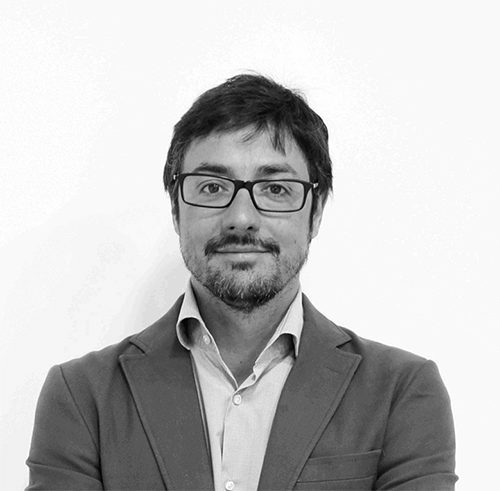
9 Keys to Remote Collaboration
We are living in a historic moment. Elements of remote work that may have been only a small part of our business have become our everyday working reality. Even once we return to working in-person, the patterns we are setting today will transform the way we work moving forward. Now more than ever, we’ll need creativity and collaboration to succeed.
In this time of Coronavirus, we’ve shifted frog’s working tools to enable ongoing design at scale. We now have more than 60 programs running this way globally. We recently decided to host a webinar to share some of our experiences in working together even at a time of physical isolation.
During the webinar, we talked about collaboration and problem-solving in a remote context. We discussed the difference between an operational and creation mindset–and how both are necessary for a successful business. We also shared three collaboration methods often used in-person, which you can use remotely to good effect with commonly available online tools:
- ‘Person in the Pit’ model to help you frame your session
- ‘Mental Excursion’ to help you keep a remote team engaged
- ‘Intrigue Selection’ to down-select with a growth mindset
In addition, we talked about how critical it is to establish a climate for your team that supports their creative performance. This is one in which everyone understands and supports the task they’re all after, everyone has each other’s back, and all believe they can find a solution. We then demonstrated how a team at frog recently used these tools and principles to solve a specific, pressing challenge many know all too well: working from home while helping children also “work” from home.
Watch the webinar recording to hear the full discussion.
Cris Perán (CP): Creativity is something we’re all born with. In fact, leading experts like Ken Robinson and multiple studies support that all of us are born creative geniuses, but at a certain moment in our lives, we learn that being creative can bring unwanted consequences. This happens specifically within our educational systems where we are taught there’s only one answer to every exam question.
As a result, learning to be creative is rather an unlearning process more than anything else. Often when we feel people are not being creative around us during a session, it’s actually our fault, not theirs. People may feel worried that they are being tested to come up with the right answer, rather than feel free to be creative. As a member of the team, it’s your job to ensure all feel safe to explore in this context. Working remotely is of absolutely no consequence to your team’s creative potential, but you will need to adapt your process to the circumstances.
Turi McKinley (TM): I think of design as making-based problem-solving, so I throw quite a wide net around how that translates into the digital world. Digital tools let us get to know our users, synthesize that learning into actionable insights that drive rich concepting, and then help us iteratively refine those concepts into viable solutions. However, just like a post-it note in your team room, or a white board in a meeting room, it’s not the tool itself that is valuable. It’s about how the team uses those tools to make things happen.
So, what changes for a traditional design team? Let’s assume that ‘traditional’ here means a team working together in a team room, engaging in regular collaboration and crit sessions, directly sharing work, and (hopefully) frequently engaging with their users in the process of designing something and making it real. With that definition, the main change now is in leadership. For the team leader and the program manager, how you curate tools and direct the group to capture insights will have a big impact on the ease and speed of this work.
This will require more planning and preparation to make it go smoothly. In a physical space, it’s quite easy to move, re-sort, build understanding and share to a group using just post-its and markers. In the digital world, different tools fulfill different needs. Some, like Excel, are great for capture, but don’t help groups ‘see and feel’ emerging knowledge. That’s where digital canvas tools like Miro or Mural can bridge the gap. Teams can decide when to literally zoom out together to see the big picture of affinity groups, and when to dive into the details.
CP: Technology has evolved wonderfully during the last decades. The quality of audio and video communication improves with every blink of our eyes. New ways of remote collaboration have emerged, whether they are over “traditional” formats like word processing documents or presentations, or via digital canvas tools like Miro or Mural. The reality is that there’s a tool for mostly every task and for every team. We have found that when engaging people to participate, it ultimately boils down to ensuring they CAN contribute and that their contribution is VALUED. Of course, they will also want their effort to be MEANINGFUL, so showing you’re actually doing something with the content of the session is also crucial.
CP: Someone told me something once about trust: It takes a lifetime to build and a second to destroy it. And right he was. Especially if you’re a lead member of the team, but also if not, you have to give trust to receive it. For people to believe you really value their contribution, you need to really value their contribution.
There’s not much you can do about what people think about themselves, but you can show them what you think of them. If you assume value on everybody’s contribution and give them credit and recognition for it, eventually everyone will feel good about contributing in your sessions. This is assuming there are no hidden agendas or underlying conflicts within the team, which unfortunately is not uncommon. For those cases, we have answers, too, but they need to be considered on a case-by-case basis.
TM: Someone who is resistant has likely already had a bad experience with digital or remote work. Perhaps they were frustrated finding necessary information or have felt embarrassed by their inexperience. Re-engaging them can take both empathy and patience. I’m a fan of one-to-one conversations in situations like this. I try to remember my own learning curve and frustrations with the tools (ask my colleagues how I feel about Slack). You may find that the resistant person is aware that these new ways of work are needed, and that sharing their experience with someone is enough to tip the balance towards engagement.
For both the new and resistant participants, my recommendation is to assign someone on your team to become an internal expert on each digital tool so they can be live ‘customer support’ as needed. For example, in a recent workshop with a new client in the broadcast space, we used a digital canvas tool that was new to many of us. Miguel, an interaction designer at frog, committed to really learning the tool, and it was lucky that he did. When the key stakeholder kept getting lost on the board, zooming way out, Miguel knew about a specific product feature, the ability to jump to another user’s cursor, that brought everyone quickly back to the area in focus for the topic at hand. It was an enormous help for the stakeholder, and it really eased the tensions among the client team (and our team, too.)
Our ability as designers to ‘think like a user’ needs to be turned to how we can help our colleagues become comfortable using these new tools—and in the process we’ll end up improving our own ability as well.
CP: I’m sad to report a collaborative session will need your full attention…and so will your child (eventually). So, what can you do? Set firm time restrictions for the session, and find a way for your children to be occupied. Better if it is something they really like and makes them happy so they don’t feel on the losing end of the deal (Pokémon is quite high in my house’s chart right now).
Once your session is complete, be clear with your team that you will be dedicating your full attention back to home responsibilities. Half running the session while half being with your children will make everyone wholly unhappy—probably you most of all.
TM: To be effective, design teams need tools to support two broad activities: (1) working together and (2) designing and delivering great experiences customers love.
- For working together, we need video communication to let us see each other and share in real time. Collaboration and documentation tools provide us the ability to communicate asynchronously and structure our knowledge. In addition, program and project management software help us know where to focus next.
- When designing and delivering great experiences, we need remote design research and user validation to enable us to know and interact with our users. We need digital canvas tools to give teams a place to think visually and explore ideas, as well as collaborative design and delivery platforms to make things real.
There are many tools to address these needs. Overall, frog is tool-agnostic, though we do offer a focused workshop to help you define the remote collaboration tools and processes that will work best for your environment.
CP: Think in terms of outcome, team, process and tools. And in that order. Otherwise, you might be running a session for the wrong reasons or modifying something without the right people involved. Not every problem even needs a remote session—some challenges can be solved over email.
TM: Kara Pecknold, Design Director at frog Munich, wrote a great piece for The Next Web all about why leaders need to practice radical empathy during this time. In her article, she cites an example of how the frog team eased anxieties while collaborating remotely with Médecins Sans Frontières (MSF; AKA Doctors without Borders). In addition, Matteo Penzo, Executive Director at frog Milan, recently gave a fully remote presentation on digital product delivery.
What’s Next?
If you and your team are ready to come together with frog experts to solve real, pressing problems within your organization, we’re ready to help. Find out more about frog-led remote training workshops and strategic problem-solving sessions. We also invite you to learn more about frog’s Org Activation practice, a service that helps unleash the human potential in organizations.

Turi McKinley focuses on developing frog’s design research, participatory design and creative collaboration skills. She partners closely with companies seeking to develop new skillsets and capabilities for user-centered design and innovation.

Cris has led innovation and R&D teams for over 20 years, specializing In creative problem solving, as well as the development and launch of new products and services. His expertise involves setting up innovation models for businesses and organizations, fostering company culture, insight-led product and service design, and running inventive problem-solving projects.

Albert helps clients innovate by bringing new products and services to life through a blended practice of strategy, design, and technology. As a director of Design Technology, Albert has helped in shaping the Design Technology practice for frog at-large and our NY Studio.
We respect your privacy
We use Cookies to improve your experience on our website. They help us to improve site performance, present you relevant advertising and enable you to share content in social media. You may accept all Cookies, or choose to manage them individually. You can change your settings at any time by clicking Cookie Settings available in the footer of every page. For more information related to the Cookies, please visit our Cookie Policy.